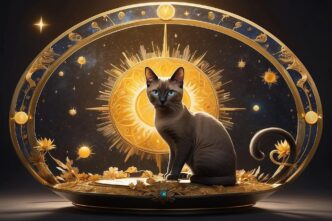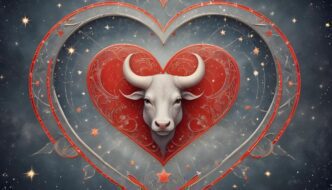The 27 Nakshatras form the heart of Vedic Astrology, offering a profound and nuanced map of the cosmos that goes far beyond the familiar 12 signs of the solar zodiac. Known as the lunar mansions, these fixed star constellations chart the Moon’s 27-day journey around the Earth, with each Nakshatra representing a specific segment of the sky. For anyone seeking to understand their core personality, emotional drivers, and karmic path, their birth Nakshatra—the one the Moon occupied at the moment of their birth—provides an unparalleled key. This ancient system, originating in the sacred texts of India, decodes the subtle energies that shape our psychology, relationships, and destiny, providing a deeply personal guide to navigating life’s challenges and opportunities.
What Are the Nakshatras?
While Western astrology primarily focuses on the Sun’s position in one of the 12 zodiac signs, Vedic Astrology, or Jyotish, places immense importance on the Moon. The Moon represents our mind, emotions, and consciousness, making its placement a powerful indicator of our inner world. The Nakshatras are the framework for this lunar-centric analysis.
Imagine the 360-degree belt of the zodiac. Instead of dividing it into 12 large sections of 30 degrees each, the Nakshatra system divides it into 27 smaller, more precise segments. Each Nakshatra spans 13 degrees and 20 minutes of the zodiac, creating a highly detailed celestial matrix.
This system allows for a much more granular interpretation of a person’s character. While two people might share the same Sun sign, their Moon Nakshatras could be completely different, explaining the vast differences in their emotional responses, instincts, and life experiences. Your birth Nakshatra, or Janma Nakshatra, is considered the most significant placement in your entire birth chart.
The Intricate Structure of a Nakshatra
The depth of the Nakshatra system extends even further through its internal divisions and associations. Each Nakshatra is not a monolithic entity but a rich tapestry of interwoven energies, defined by its padas, deity, and planetary ruler.
The Four Padas
Every Nakshatra is subdivided into four equal parts called padas, or “steps.” Each pada spans 3 degrees and 20 minutes. This creates a total of 108 padas (27 Nakshatras x 4 padas) across the entire zodiac, a sacred number in many Eastern traditions.
The pada in which your Moon falls provides an even deeper layer of specificity. Each pada corresponds to a sign in the Navamsa, or D9 divisional chart, which is the chart of one’s spiritual path and marriage. This links the Nakshatra’s energy directly to a zodiac sign’s quality, adding another dimension to the interpretation.
Presiding Deities and Planetary Rulers
Each of the 27 Nakshatras is governed by a presiding deity from the Vedic pantheon. This deity embodies the core essence, power, and spiritual lesson of the Nakshatra. Understanding the deity’s mythology reveals the fundamental drive and potential of the lunar mansion.
Furthermore, the Nakshatras are ruled by planets in a specific, repeating sequence known as the Vimshottari Dasha system. This sequence is: Ketu, Venus, Sun, Moon, Mars, Rahu, Jupiter, Saturn, and Mercury. This rulership is critical for predictive astrology, as it determines the timing of major life periods (dashas).
Core Motivations (Purusharthas)
The Nakshatras are also categorized by their primary motivation, reflecting the four aims of human life, or Purusharthas. These are Dharma (life purpose and duty), Artha (wealth and material security), Kama (desire and enjoyment), and Moksha (spiritual liberation). The motivation of your birth Nakshatra points to the underlying theme of your life’s journey.
A Guide to the 27 Lunar Mansions
Here is a brief overview of each of the 27 Nakshatras, grouped by their planetary ruler to illustrate the cyclical pattern of their energies.
Ketu-Ruled Nakshatras: The Initiators
These Nakshatras carry an intense, spiritual, and often disruptive energy associated with beginnings, endings, and psychic insight.
- 1. Ashwini (0°00′ – 13°20′ Aries): Symbolized by a horse’s head, it represents speed, initiation, and healing. Ruled by the Ashvini Kumaras, the divine physicians, it gives a desire to help others and act quickly.
- 10. Magha (0°00′ – 13°20′ Leo): Symbolized by a royal throne, it relates to power, ancestry, and authority. Ruled by the Pitris (ancestors), it bestows leadership and a connection to tradition.
- 19. Mula (0°00′ – 13°20′ Sagittarius): Symbolized by a bunch of tied roots, it signifies investigation, inquiry, and getting to the core of things. Ruled by the goddess Nirriti (destruction), it can bring about radical transformation.
Venus-Ruled Nakshatras: The Creators
These Nakshatras are imbued with creativity, sensuality, charm, and a love for beauty and luxury.
- 2. Bharani (13°20′ – 26°40′ Aries): Symbolized by the yoni (female organ of generation), it represents the cycle of birth, death, and transformation. Ruled by Yama, the god of death, it carries intense, creative, and transformative power.
- 11. Purva Phalguni (13°20′ – 26°40′ Leo): Symbolized by the front legs of a bed, it relates to rest, pleasure, and romance. Ruled by Bhaga, the god of good fortune, it brings charisma and a love of the arts.
- 20. Purva Ashadha (13°20′ – 26°40′ Sagittarius): Symbolized by a fan or a winnowing basket, it represents invincibility, popularity, and purification. Ruled by Apas (the god of water), it gives ambition and the ability to influence others.
Sun-Ruled Nakshatras: The Leaders
These Nakshatras carry the solar qualities of power, authority, ambition, and a strong sense of self.
- 3. Krittika (26°40′ Aries – 10°00′ Taurus): Symbolized by a sharp blade or razor, it represents cutting, purifying, and decisive action. Ruled by Agni, the god of fire, it gives a fiery, critical, and determined nature.
- 12. Uttara Phalguni (26°40′ Leo – 10°00′ Virgo): Symbolized by the back legs of a bed, it signifies partnership, commitment, and helping others. Ruled by Aryaman, the god of patronage, it bestows kindness and stable relationships.
- 21. Uttara Ashadha (26°40′ Sagittarius – 10°00′ Capricorn): Symbolized by an elephant’s tusk, it represents enduring victory and integrity. Ruled by the Vishvadevas (universal gods), it gives leadership, responsibility, and high principles.
Moon-Ruled Nakshatras: The Nurturers
These Nakshatras are gentle, receptive, emotional, and focused on growth, community, and care.
- 4. Rohini (10°00′ – 23°20′ Taurus): Symbolized by an ox cart, it is the star of ascent and growth. Ruled by Brahma, the creator, it grants charm, creativity, and a love for all things beautiful and natural.
- 13. Hasta (10°00′ – 23°20′ Virgo): Symbolized by a hand, it represents skill, craftsmanship, and dexterity. Ruled by Savitur, the sun god, it provides a clever, witty, and resourceful nature.
- 22. Shravana (10°00′ – 23°20′ Capricorn): Symbolized by an ear, it is the star of listening and learning. Ruled by Vishnu, the preserver, it gives a desire for knowledge, wisdom, and connection to tradition.
Mars-Ruled Nakshatras: The Warriors
These Nakshatras are energetic, competitive, driven, and focused on logic, research, and achieving goals.
- 5. Mrigashira (23°20′ Taurus – 6°40′ Gemini): Symbolized by a deer’s head, it represents searching, seeking, and curiosity. Ruled by Soma (the Moon god), it gives a gentle, restless, and inquisitive mind.
- 14. Chitra (23°20′ Virgo – 6°40′ Libra): Symbolized by a shining jewel, it represents beauty, artistry, and brilliant creation. Ruled by Tvashtar, the celestial architect, it bestows charisma, elegance, and technical skill.
- 23. Dhanishta (23°20′ Capricorn – 6°40′ Aquarius): Symbolized by a drum (damaru), it is the star of wealth and rhythm. Ruled by the eight Vasus (gods of earthly abundance), it gives musical ability, ambition, and material success.
Rahu-Ruled Nakshatras: The Innovators
These Nakshatras are unconventional, ambitious, and often associated with illusion, mass trends, and sudden changes.
- 6. Ardra (6°40′ – 20°00′ Gemini): Symbolized by a teardrop, it represents storms, upheaval, and emotional cleansing. Ruled by Rudra, the storm god, it can bring intense emotional experiences that lead to profound renewal.
- 15. Swati (6°40′ – 20°00′ Libra): Symbolized by a young shoot swaying in the wind, it represents independence, self-reliance, and adaptability. Ruled by Vayu, the god of wind, it gives a restless, diplomatic, and business-savvy nature.
- 24. Shatabhisha (6°40′ – 20°00′ Aquarius): Symbolized by an empty circle or 100 physicians, it is the star of healing and veiling. Ruled by Varuna, the god of the cosmic waters, it grants a secretive, philosophical, and mystical nature.
Jupiter-Ruled Nakshatras: The Guides
These Nakshatras are wise, optimistic, philosophical, and focused on expansion, knowledge, and righteousness.
- 7. Punarvasu (20°00′ Gemini – 3°20′ Cancer): Symbolized by a quiver of arrows, it represents return, renewal, and recovery. Ruled by Aditi, the mother of the gods, it gives a nurturing, philosophical, and good-natured personality.
- 16. Vishakha (20°00′ Libra – 3°20′ Scorpio): Symbolized by a triumphal arch, it represents purpose, determination, and achievement. Jointly ruled by Indra (king of gods) and Agni (god of fire), it bestows ambition and focus.
- 25. Purva Bhadrapada (20°00′ Aquarius – 3°20′ Pisces): Symbolized by the front legs of a funeral cot or a two-faced man, it represents intense, transformative, and often eccentric energy. Ruled by Aja Ekapada (a one-footed goat form of Rudra), it is passionate and philosophical.
Saturn-Ruled Nakshatras: The Servants
These Nakshatras are disciplined, patient, and focused on duty, structure, and service to others.
- 8. Pushya (3°20′ – 16°40′ Cancer): Symbolized by the udder of a cow, it is the star of nourishment and is considered the most auspicious Nakshatra. Ruled by Brihaspati, the guru of the gods, it gives a caring, spiritual, and helpful nature.
- 17. Anuradha (3°20′ – 16°40′ Scorpio): Symbolized by a lotus flower, it represents friendship, devotion, and success through cooperation. Ruled by Mitra, the god of friendship, it fosters loyalty and leadership.
- 26. Uttara Bhadrapada (3°20′ – 16°40′ Pisces): Symbolized by the back legs of a funeral cot, it represents wisdom, self-control, and compassionate service. Ruled by Ahir Budhnya (the serpent of the deep), it is disciplined and benevolent.
Mercury-Ruled Nakshatras: The Communicators
These Nakshatras are intellectual, analytical, and focused on communication, commerce, and learning.
- 9. Ashlesha (16°40′ – 30°00′ Cancer): Symbolized by a coiled serpent, it represents hypnotic power, insight, and penetrating wisdom. Ruled by the Nagas (serpent deities), it gives a perceptive, cunning, and sometimes intense nature.
- 18. Jyestha (16°40′ – 30°00′ Scorpio): Symbolized by an earring or an umbrella, it is the “chief star” representing seniority and authority. Ruled by Indra, king of the gods, it bestows a powerful, protective, and responsible character.
- 27. Revati (16°40′ – 30°00′ Pisces): Symbolized by a fish or a drum, it represents nourishment, protection, and safe travels. Ruled by Pushan, the shepherd god, it gives a sweet, compassionate, and deeply spiritual nature, marking the end of the zodiacal journey.
The Power of Nakshatras in Practice
Vedic astrologers use Nakshatras in several critical ways. In natal chart analysis, the Moon’s Nakshatra, along with the Nakshatras of the Ascendant and other key planets, paints a detailed psychological portrait of an individual.
For prediction, the Vimshottari Dasha system, a timeline of planetary periods based entirely on your birth Nakshatra, is the most widely used tool for forecasting life events. It reveals which planetary energies will be most active during different phases of your life.
Finally, in Muhurta, or electional astrology, the Nakshatra the Moon is transiting on a given day is used to select the most auspicious time to begin any important undertaking, from signing a contract to getting married. This ancient practice aligns human actions with the supportive energies of the cosmos.
The 27 Nakshatras are an elegant and powerful system, offering a window into the soul and a map for our life’s journey. By moving beyond the broad strokes of the Sun signs and exploring the subtle wisdom of these lunar mansions, we can gain a far deeper appreciation for our unique nature and the cosmic energies that guide us.








